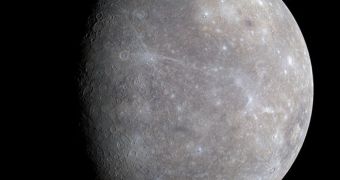A collaboration of researchers, including Doug Rumble and Liping Qin from the Carnegie Institution for Science (CIW), has recently been able to find out more data about the history of the early solar system, by studying extremely old meteorites that formed very shortly after the Sun did.
The star is believed to be a little more than 4.6 billion years old. As soon as it collapsed from its molecular hydrogen cloud, a structure called a protoplanetary disk began to form around it. This disk was made up of gas and dust that did not fall into the Sun.
Gradually, the first solid objects began to form, around accretion nuclei in the protoplanetary disk. The meteorites the team analyzed in the new study are believed to have come from objects formed just 2 million years after the first solid objects developed.
In a paper published in the July 22 issue of the top journal Nature Geoscience, the researchers explain how they use a wide array of study techniques to investigate the properties of nine diogenite meteorites, seven of which were recovered from Antarctica, and two from the African desert.
Diogenites are extremely rare and old meteorites, whose chemical composition can reveal a wealth of data about the conditions present in the solar system when they first formed. The work allowed further insight into how the interiors of large asteroids and rocky planets differentiated.
This process leads to the separation of a metallic core from a silicate mantle, while a rocky crust envelops the mixture. This requires a lot of heat, which is usually generated by the decay of radioactive particles, by asteroid or comet impacts, and by the separation of lighter silicates from denser metals.
Earth's inner structure is believed to have formed around 4.4 billion years ago, while Mars' was made some 4.5 billion years ago. As differentiation occurs, highly siderophile elements – including osmium, iridium, platinum, palladium and ruthenium – should segregate inside the core of planets.
However, our world's mantle contains significantly higher amounts of such elements than it should. The research group set out to determine why that is, and decided to use diogenite meteorites to arrive at a conclusion.
The study revealed the presence of highly siderophile elements inside diogenite meteorites, suggesting that the chemicals were present when the rocks themselves were formed, shortly after the emergence of the Sun.
“This new understanding of diogenites gives us a better picture of the earliest days of our Solar System and will help us understand the Earth's birth and infancy. Clearly we can now see that early events in planetary formation set the stage very quickly for protracted subsequent histories,” Rumble concludes.

 14 DAY TRIAL //
14 DAY TRIAL //